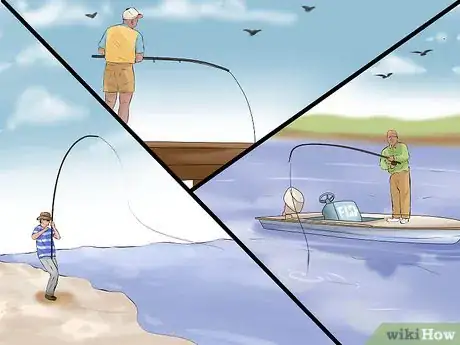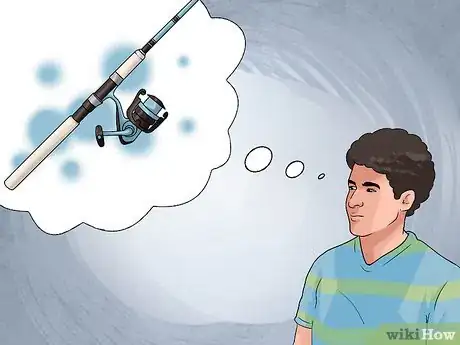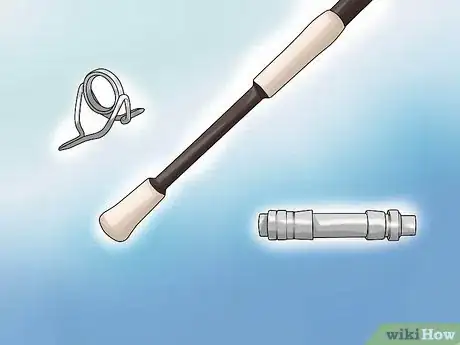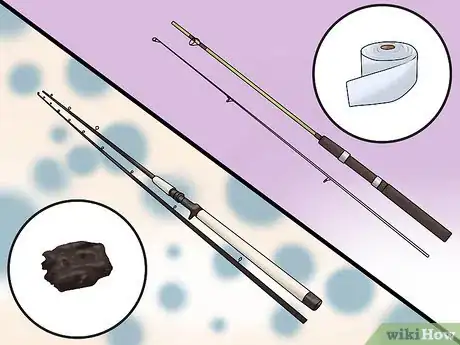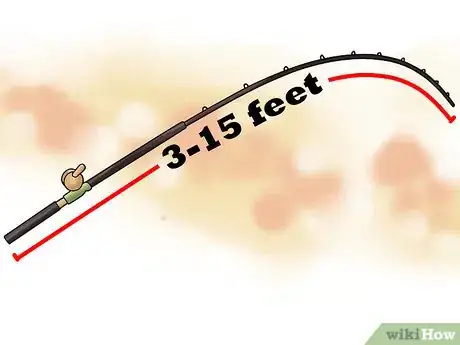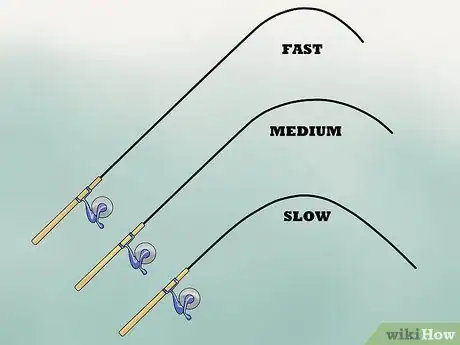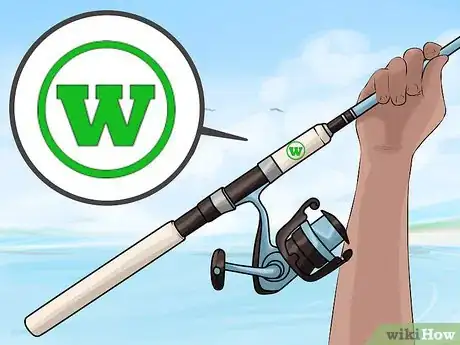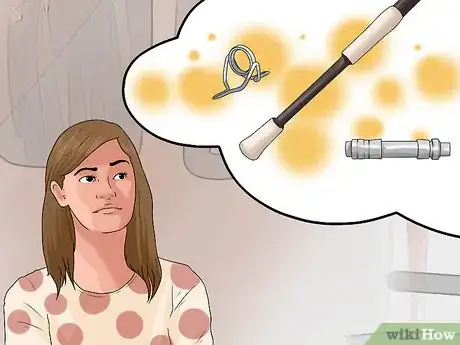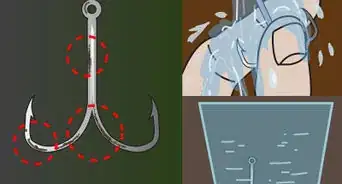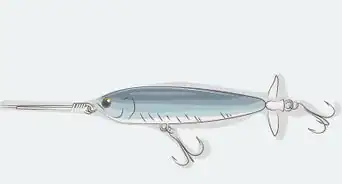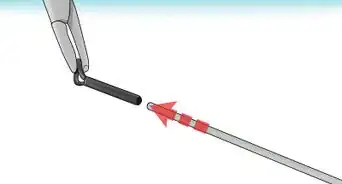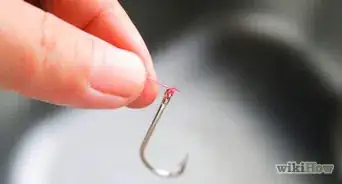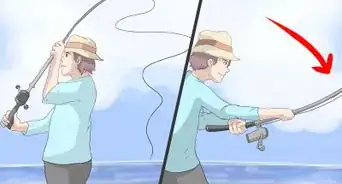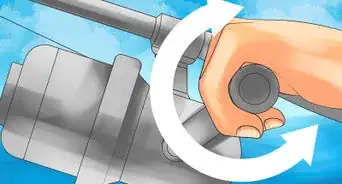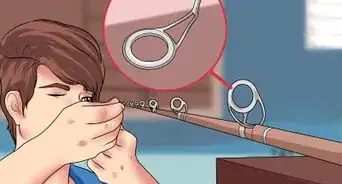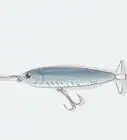This article was co-authored by wikiHow Staff. Our trained team of editors and researchers validate articles for accuracy and comprehensiveness. wikiHow's Content Management Team carefully monitors the work from our editorial staff to ensure that each article is backed by trusted research and meets our high quality standards.
This article has been viewed 76,014 times.
Learn more...
Saltwater fishing gear tends to be more expensive than freshwater equipment, which means it's important to know early on exactly what you need from a rod. Deciding on a style of fishing and the approximate size and weight of the fish you'd like to catch are important first steps. From there, you will have an easier time sorting through the various options that rods offer, and thus find the right rod for you.
Steps
Evaluating Your Needs
-
1Decide on a style of fishing. Expect certain rods to perform better in specific scenarios and with specific fish. Determine which type of fishing you will be engaged in: surf, pier, inshore, offshore, trolling, or ice. Make sure that you are buying the right tool for the job to ensure the best performance.[1] [2]
- Surf fishing: standing on the shoreline and casting your line beyond the breakers.
- Pier fishing: casting from a pier or other structure that projects from shore over the water.
- Inshore fishing: fishing in shallow waters less than 98 feet deep (30 meters), typically only a few miles or kilometers from land.
- Offshore fishing: fishing in deeper waters, possibly 30 to 130 miles away from land (48 to 209 km).
- Trolling: dropping a line into the water from a moving boat instead of casting from a fixed point.
- Ice fishing: dropping a line into a hole cut through the ice that covers the water’s surface.
-
2Consider your experience. Bear in mind that some rods are better suited for novices. Understand that even though a particular rod may be considered the best one for, say, surf fishing, its design may not lend itself well to learning the basic maneuvers of fishing, like casting. Unless you are already well practiced, choose a rod that will allow you to master the basics, rather than one that requires you to have already mastered them.[3]
- If you are a beginner, search for “combos,” which are customized for each type of fishing and include not only the rod, but the equipment best matched for it as well, such as reel, line, and tackle.[4]
Advertisement -
3Look for saltwater rods, not freshwater. Even though a rod alone can be used in either type of water when it's stripped down to just the pole, understand that all of the accompanying parts must be designed specifically to withstand saltwater. Choose between saltwater rods only to ensure that your equipment won’t corrode. In addition to the pole itself, other parts include:[5]
- Guides: the loops along the length of the pole, through which the line is fed. These include the “tip-top,” which, as the name implies, is the last guide at the very top of the pole.
- Grips: the area by which the pole is held.
- Seats: the area where the reel is attached.
-
4Visit a brick-and-mortar store. Even if you plan on looking for better deals online, go to an actual fishing-supply store first so you can speak with the staff. Tell them the style of fishing that you plan to do, the type of fish that you hope to catch, and your experience-level. Ask for their advice in what features to look for in a suitable rod that will match your specific needs, especially if you choose to buy other equipment (reel, line, and lures) separately instead of as a combo.
- Also share your budget. Prices may range from as low as $35 to over $600.
Considering the Basic Options
-
1Choose a type of rod. Narrow your search according to the exact type of fishing that you are interested in. Choose between rods that are either specifically designed for that purpose or otherwise well suited for it. Types of rods include:[6] [7] [8]
- Surfcasting: with these, the emphasis is on length so that the line reaches past the breakers when cast.
- Spinning/casting: accommodates continuous casting and retrievals.
- Conventional: more compact and resilient to handle heavier fish.
- Trolling: designed to be used with a fighting belt or chair for very heavy fish.
- Ice: the shortest of rods, since no casting is required.
-
2Test its weight. Obviously, you want a rod that you can comfortably cast and handle when reeling in fish. Take a few practice casts without any line to judge how it feels in your hand. Check the material from which it is made. Expect most rods to be made of either fiberglass or graphite.[9] [10]
- Choose graphite for the lightest rod, which also allows you to feel the fish’s movements with more sensitivity.
- If you are a beginner, consider fiberglass, since these rods require less maintenance.
-
3Decide on a length. Expect fishing rods to stand anywhere from 3 to 15 feet (1 to 4.5 meters), or even higher. Favor a longer length to cast long distances. However, for heavier fish that put up a fight, choose a more compact rod for its extra strength. Other factors to consider are:[11] [12]
- Whether you need to cast the line or merely drop it into the water.
- How far you need to cast the line to reach the target area.
- Your own height, since the longest rod available will be more difficult to manage if you are shorter than average or not yet fully grown.
- The added weight that comes with extra length.
- Whether you will be crowded by people or objects while casting, in which case shorter is best.
Customizing to Your Needs
-
1Consider the rod’s action. Understand that “action” refers to the rod’s flexibility. Select between the three classifications: fast, medium, and slow. Base your choice on the size of fish you aim to catch, as well as the conditions that you will be fishing in.[13]
- Fast: mostly rigid with only the very tip offering any flexibility. Fast-action is best suited for heavy fish and equipment (line, lure, reels). Its lack of flexibility also makes it ideal for windy conditions. It produces a very forceful cast that will cover long distances. However, it is difficult to use without prior experience.
- Medium: rigid along the bottom half with more bend along the top. It produces moderately long casts with greater accuracy than fast rods, and is also capable of shorter casts. The rigid bottom offers resistance against the wind and can handle all but the extreme sizes of fish, large or small. Novices who are eager to experience a wide variety of fishing should begin with this.
- Slow: bends along the entire length of the rod. It is only suitable for small fish, light equipment, and fair weather. Its cast is short, but also very precise. For a beginner, this is the easiest action to start with.
-
2Check the rod’s power. Understand that “power” refers here to the amount of weight that the pole can handle without breaking. Decide on which size of fish you wish to catch. Select a rod with the appropriate amount of power. Note that a rod's power may vary from brand to brand, so ask sales staff for assistance in determining the best rod per brand for the fish you wish to catch.[14] Expect rods to be categorized as:[15]
- Ultra-light
- Light
- Medium-light
- Medium
- Medium-heavy
- Heavy
- Ultra-heavy
-
3Match your other equipment to the rod. If you are purchasing the rod by itself instead of opting for a combo package that includes a reel, line, and lures, make sure that you purchase the right items for your rod. Check the line weight that it recommends. Purchase a reel that is also meant for that exact weight. Only use fishing line of that weight in that reel. Also be sure that your bait or tackle is meant to be used with that line weight.[16] [17]
- Mismatching light line with a reel and rod meant for heavy line, or vice versa, can result in damaged equipment.
- Remember to make sure that each additional part is meant for saltwater fishing, not freshwater.
Community Q&A
-
QuestionCan I use a regular Walmart rod and reel?
 Community AnswerAs long as it is specifically designed for saltwater use, then yes.
Community AnswerAs long as it is specifically designed for saltwater use, then yes.
References
- ↑ http://www.ebay.com/gds/Your-Guide-to-Buying-Rods-for-Saltwater-Fishing-/10000000177627872/g.html
- ↑ https://www.shareafishingcharter.com/blog/2015/12/inshore-versus-offshore-fishing-whats-the-difference/
- ↑ http://www.ebay.com/gds/Your-Guide-to-Buying-Rods-for-Saltwater-Fishing-/10000000177627872/g.html
- ↑ http://www.westmarine.com/WestAdvisor/Selecting-a-Fishing-Rod
- ↑ http://www.westmarine.com/WestAdvisor/Selecting-a-Fishing-Rod
- ↑ http://www.westmarine.com/WestAdvisor/Selecting-a-Fishing-Rod
- ↑ http://www.ebay.com/gds/Your-Guide-to-Buying-Rods-for-Saltwater-Fishing-/10000000177627872/g.html
- ↑ https://www.takemefishing.org/saltwater-fishing/saltwater-fishing-gear/saltwater-rods-reels/
- ↑ http://protips.dickssportinggoods.com/how-to-buy/angler-approved-your-complete-guide-to-fishing-rods/
- ↑ https://www.takemefishing.org/saltwater-fishing/saltwater-fishing-gear/saltwater-rods-reels/
- ↑ http://protips.dickssportinggoods.com/how-to-buy/angler-approved-your-complete-guide-to-fishing-rods/
- ↑ http://protips.dickssportinggoods.com/how-to-buy/angler-approved-your-complete-guide-to-fishing-rods/
- ↑ http://www.ebay.com/gds/Your-Guide-to-Buying-Rods-for-Saltwater-Fishing-/10000000177627872/g.html
- ↑ http://www.tacklewarehouse.com/guides/rodselection.html
- ↑ http://protips.dickssportinggoods.com/how-to-buy/angler-approved-your-complete-guide-to-fishing-rods/
- ↑ https://www.takemefishing.org/saltwater-fishing/saltwater-fishing-gear/saltwater-rods-reels/
- ↑ http://www.westmarine.com/WestAdvisor/Selecting-a-Fishing-Rod
